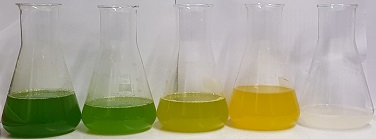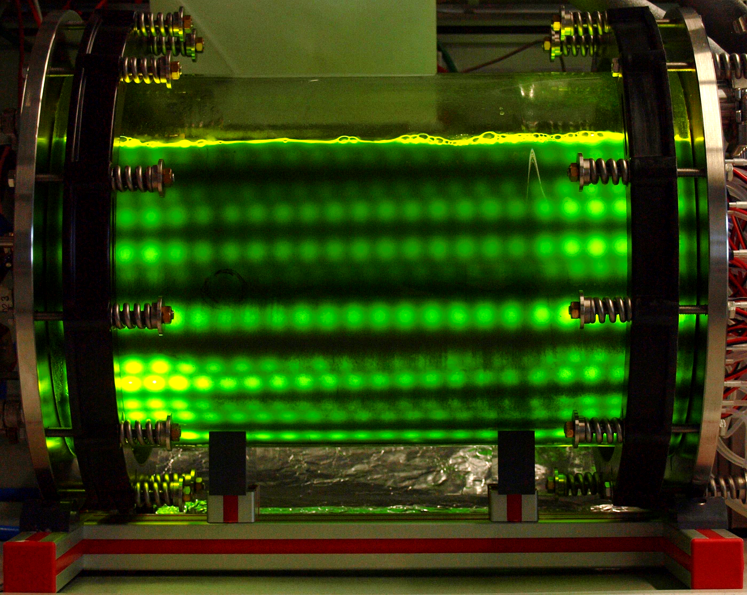Microalgal research is mostly focused on the development of bulk products such as food and feed. Low product prices and large scale production plants require the efficient usage of sunlight as the natural energy source and the production of microalgal biomass outdoors. In contrast, the energy efficiency is of lower importance in the act of generating high value products. The production scale of high value compounds is usually orders of magnitude smaller than the scale of bulk productions.
The cultivation of microalgae for the synthesis of high value products can be performed indoors under well-defined conditions. Thus, the same parameters can be applied in different locations. Indoor cultivations ensure a greater freedom of choice regarding light and temperature settings compared to climate-dependent cultivation outdoors.
In the KMU-innovativ-15 project, we use a photobioreactor especially designed for the indoor production of high value compounds. The biomass accumulation of the green microalga Chlorella vulgaris will be optimized in this reactor. Therefore, investigations of the effect of changes in light and temperature settings as well as nutrient concentrations on the algal metabolism will be performed separately first at small scale. The outcome will be incorporated into a cultivation procedure for optimal growth, which will be tested in the newly designed photobioreactor.
The accumulation of certain biomass constituents requires accumulation inducing conditions. The versatile metabolism of microalgae reacts to changes in light and temperature settings and nutrient availability. High light conditions combined with low nutrient concentrations may lead to storage of carbon and energy storage compounds such as lipids or starch.

Figure 1: Microalgae cultured under various conditions
The main goal of this project is the optimization of the photoautotrophic production of isotopic labeled starch. Isotopic labeled substrates are used to label algal biomass. The isotopic labeled biomolecules can further be used for the synthesis of high value standards in metabolomics. Nutrient feeding strategies will be developed to optimize the accumulation of algal biomass with high starch content. Additionally, the metabolic effects caused by quantitative and qualitative changes in the light supply will be investigated. These approaches will be supported by metabolic modelling of microalgae cultivation and modelling of the light pattern using the Lattice Boltzmann method.

Abbildung 2: Cultivation of microalgae in novel algfine reactor

